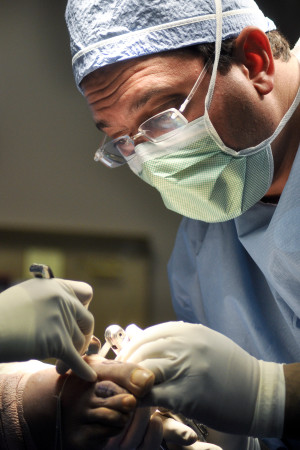The month of October makes most people think of pumpkin spice lattes, vibrant leaves, and Halloween costumes. But here at Premier Orthopaedics, we have something else we keep an eye out for, too, because it's also the time of year known as National Spine Health...
LATEST BLOGS
September is National Vascular Disease Awareness Month
As September starts, it's National Vascular Disease Awareness Month. This is a great time to learn about the health of our veins and arteries. Vascular diseases include problems like deep vein thrombosis and peripheral arterial disease. Read on to learn how to keep...
Causes & Treatment Options for Sciatica
Pain that starts in the lower back and radiates down the back of the leg is what is commonly referred to as sciatica. The pain follows the path of the sciatic nerve down the leg which means that typically, only one side of the body is affected. The sensation that...
Recovering from a Fracture

A fracture occurs when a fall or other blunt force trauma breaks a bone. While they can bend slightly or give when struck by a force, bones will break when the force is too great. The severity of the fracture depends on the amount of force applied to the bone, and recovery time depends on the severity of the fracture. Fractures are painful no matter the cause—a fall, an automobile accident, or a tackle during a football game—but recovering from a fracture typically is straightforward.
Examination
Pain, swelling, tenderness, and bruising are common symptoms of a fracture, and depending on the severity, a deformity even is possible. If you experience any of these symptoms after a fall or other common cause of a fracture, seek medical treatment immediately so a doctor can examine your injury. During the examination, you’ll discuss how the injury occurred and will likely undergo X-rays, which will provide clear images of the bone so the doctor can identify where it’s broken and the type of fracture.
Non-Surgical Treatment
After determining the type of fracture and its location, the doctor will choose the best treatment method. When you experience a fracture, the broken pieces of bone must be repositioned and held in place until they heal. The following methods are used to treat fractures:
- Cast immobilization: A plaster or fiberglass cast is the most common type of fracture treatment. Once the bones are repositioned, the cast is applied to keep the broken ends in place, allowing them to heal.
- Functional cast or brace: Typically used only for less severe fractures, this type of cast or brace allows the joints to move in controlled motions.
- Traction: This treatment creates a steady pulling action and is used to align a bone.
Surgical Treatments
- External fixation: This is an operation during which metal pins or screws are placed into the broken bone near the fracture site and connected to a metal bar outside the skin to hold the bone in place as it heals. This device may also be used until surgery is performed when soft tissues are badly damaged.
- Open reduction and internal fixation: This operation involves returning bone fragments to their original alignment and attaching screws or metal plates to hold them together. Rods may also be inserted through the marrow space in the bone, if necessary.
Recovering
Your fracture will probably take anywhere from several weeks to several months to heal. The recovery time will depend on the severity of the fracture. Your pain typically doesn’t last for a long time after the fracture is in a cast, but it will take a little longer until the bone can handle the stress of normal activities. If you have a fracture, make sure you get to your doctor as soon as possible to be evaluated.
For more information about fracture care, click here to download our free eBook,Understanding Fracture Care: Causes, Diagnosis, and Treatment.



